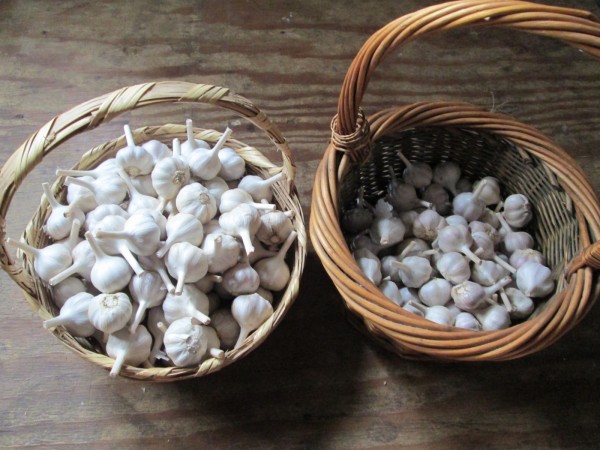This is my first year growing Indigo Rose, and I didn’t really know anything about it other than that it’s pretty. I’m a little disappointed the fruits aren’t bigger, but I just read a really interesting article (linked below) by Oregon State University, the developer of this variety.
Indigo Rose is different from other purple varieties. More familiar purple varieties like Black Krim have the color they do as a result of green chlorophyll still being present along with the red lycopene. When you mix red and green, you get brown, and in the case of a lot of “purple” tomatoes, what you actually see is a reddish brown that passes for purple. But with Indigo Rose (and one other variety I’ve never heard of, “Purple Smudge”), the purple is from the combination of red lycopene and blue anthocyanin, an antioxidant also found in blueberries, grapes, and eggplant. Unlike those other varieties that are purplish-brown all the way through, Indigo Rose is only purple on the outside.
These are not GMO, as the University emphasizes in the article. They were created by traditional selective breeding. Eggplant and tomato both belong to the genus Solanum. Breeders were able to cross wild solanums that have the same anthrocyanin-forming genes with cultivated tomatoes until they got cultivated tomatoes with purple skin.
Only the parts that get sun turn purple, though. I have several of these plants, and the tops of the fruits turned purple while the bottoms remained green. I waited, hoping the rest of the tomato would turn eventually, but the tomatoes remained two-toned. I thought of calling them “Joker tomatoes,” after the purple-and-green Batman villain. According to Oregon State, though, if you pick the tomatoes and expose the green parts to sunlight, they should turn completely purple in about a week.
Doing an image search on Google, though, I see that when the tomatoes are ripe, the parts that aren’t purple are red. Mine aren’t. When we cut them open, they’re green on the inside, so I guess they’re still not ripe. We’ve been stir-frying them with other vegetables like this and they’ve tasted fine. According to this podcast, picking some of the green ones might even help the remaining ones ripen faster.




